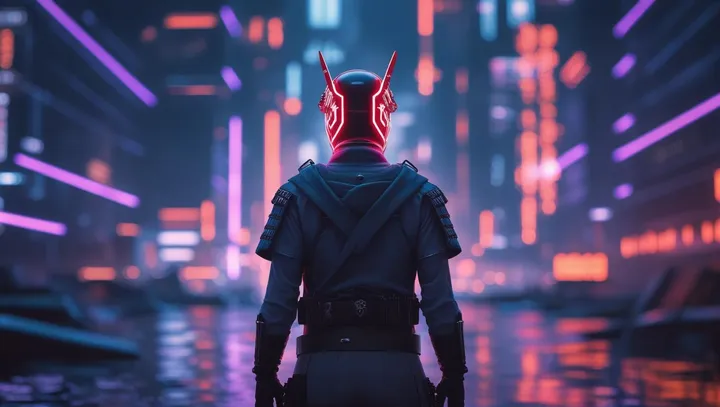
The Modern Ronin: Finding Purpose in a Chaotic Digital Age
Table of Contents
The Modern Ronin: Finding Purpose in a Chaotic Digital Age
In the sprawling legacy of Akira Kurosawa’s cinema, the figure of the ronin — a masterless samurai — emerges as one of the most compelling archetypes. These wandering warriors, untethered from traditional structures yet fiercely bound by their personal code, embody a paradox that resonates profoundly in our modern, chaotic digital age. As we navigate a world overwhelmed by noise, rapid change, and fractured identities, the lessons of the ronin offer timeless wisdom on finding purpose amidst uncertainty.
Who Is the Ronin?
Historically, a ronin was a samurai without a master, often cast aside after losing their lord. Stripped of traditional ties, they became wanderers — sometimes mercenaries, sometimes seekers of redemption. But in Kurosawa’s films, the ronin transcends this mere historical fact, becoming a symbol of individual autonomy, moral ambiguity, and relentless perseverance.
Consider Kurosawa’s “Yojimbo” (1961), where the ronin Sanjuro plays both sides of a violent feud not out of loyalty, but to carve his own path. Or “Sanjuro” (1962), where his blend of pragmatism and idealism challenges the status quo. The ronin is neither hero nor villain — he is a man defining his own destiny in a world that offers no clear rules.
The Ronin in the Digital Wilderness
Fast forward to today, and the digital landscape feels like a sprawling, chaotic battlefield much like the war-torn towns Kurosawa’s ronin traverse. Our social media feeds, professional lives, and personal identities are under constant siege by distractions, misinformation, and relentless pressure to conform or perform. In this milieu, the modern individual often feels like a ronin — untethered from traditional anchors such as stable careers, lifelong communities, or even clear cultural narratives.
The internet offers endless possibilities, yet also breeds uncertainty. Like the ronin wandering a town of rival gangs, we must navigate fragmented spaces with caution and intention. The challenge is not unlike Sanjuro’s: how do we remain true to ourselves while engaging with a world that constantly pulls us in conflicting directions?
Defining Your Own Code
One of the most powerful aspects of the ronin archetype is his commitment to a personal code of ethics — a moral compass that guides him regardless of external allegiances. In a world where societal norms can shift overnight and cultural standards often clash, having a grounded internal framework is vital.
How can we, in the digital age, cultivate our own “bushido” — a way of living that reflects our deepest values? This might mean:
- Selective consumption: Curating digital inputs to avoid overwhelm and maintain clarity.
- Intentional action: Choosing engagements that align with personal growth rather than fleeting trends.
- Resilience: Embracing failure and ambiguity as part of the journey, rather than fearing them.
Much like the ronin uses his sword not out of aggression but necessity, we can wield our attention and choices as tools for purposeful living.
The Loneliness and Freedom of the Modern Ronin
Being a ronin is inherently solitary. Kurosawa’s characters often walk alone, a visual metaphor for isolation but also for freedom. In the modern context, this solitude can feel amplified — yet it also offers unparalleled opportunity for self-discovery.
Our digital lives may connect us superficially to thousands, but true connection demands authenticity and depth. The modern ronin learns to embrace solitude as a crucible for clarity, rather than a void to be feared. This solitude is where creativity sparks, values crystallize, and meaningful purpose takes root.
Practical Steps to Embrace Your Inner Ronin
If Kurosawa’s ronin teaches us anything, it’s that purpose is not handed down — it is forged through deliberate struggle and self-reflection. Here are some practical ways to channel this spirit:
- Detach from noise: Limit social media, unsubscribe from distractions, and create intentional time for thought.
- Seek mastery: Pursue skills or passions that foster deep engagement rather than shallow multitasking.
- Set personal rituals: Whether morning journaling, meditation, or mindful walking, cultivate habits that ground you.
- Question narratives: Challenge received wisdom and cultural assumptions to build a worldview that feels authentic.
- Accept impermanence: Like the wandering ronin, embrace change and uncertainty as natural states rather than obstacles.
Conclusion: The Ronin’s Path in Our Time
Akira Kurosawa’s ronin is far more than a relic of feudal Japan. He is a mirror reflecting the eternal human quest for autonomy, integrity, and meaning amid chaos. As we wrestle with the complexities of the digital age — fragmented attention, fractured identities, and rapid transformation — the ronin’s example reminds us that purpose is not found, but made.
In a world full of noise, be your own master. Define your code. Walk your path with intention and resilience. Like the ronin, you may not have a clear “lord” or roadmap, but you have the power to wield your life’s narrative as a true director’s cut — framed with purpose, shaped by choice, and lived with uncompromising authenticity.
“A man’s true power is in his own hands — not in the titles he holds.”
— Inspired by Kurosawa’s Ronin
